
________________
Source: RocketChat
To inquire about a translation for this video message for a fee email: [email protected]

________________
Source: RocketChat
To inquire about a translation for this video message for a fee email: [email protected]

The Islamic State today looks different than it did five years ago and is far more integrated now as an organization amongst its global network than al-Qaeda ever was. It has been 10 years since the Islamic State announced itself as a caliphate and more than five years since it lost its last vestige of territory in Syria. However, with the Islamic State back in the news due to an increasing external operations capacity (with attacks in Iran, Turkey, and Russia this year as well as numerous broken up plots in Europe), there is a fundamental misunderstanding of how the group operates today. In many ways, it is either incorrectly viewed through the lens of how al-Qaeda operates (a decentralized branch network), since it had previously been a part of al-Qaeda’s global network, or based on how the Islamic State operated when it was at its prior zenith when it controlled territory in Iraq and Syria. It is also likely why some within the U.S. government may have misinterpreted signals intelligence by pushing the idea that the Islamic State leader targeted in Somalia at the end of May, Abd al Qadir Mumin, became the group’s caliph. These changes in the past five years are crucial for policymakers to understand because the way the threat presents itself today will look different from how policymakers dealt with the issue last decade when much of the focus was on the Islamic State’s territorial control in Iraq and Syria.
The most important body for understanding the Islamic State today is its General Directorate of Provinces, which has previously been based in Syria, but new information suggests that at least at the highest levels of it might now have centrality in Somalia. When one understands that structure, the Islamic State’s actions globally make more sense. It is also why we see far more interaction and connection between its various wilayat (provinces) today than in the past. In many ways, the key aspects that animate the Islamic State as an organization (governance, foreign fighter mobilization, and external operations) remain, they have just moved from primarily being based out of or controlled by its location of origin in Iraq and Syria to being spread across its global provincial network. Its aims remain the same, even if the organization has adapted to a changed environment. It is also why the challenge from the Islamic State today is different from the past and why it is in some ways also more resilient now to pressure than before.
This makes the challenge of the Islamic State more difficult from a security perspective than in the past when there was the ability to primarily zero-in on its efforts in Iraq and Syria. Today, only focusing on Iraq and Syria or any other province independent of understanding its connections to other parts of the group’s global network will lead to missing crucial details due to expediency. This is why, although it is understandable that the United States has shifted a lot of its manpower and budgeting to more existential and larger problem-sets such as China and Russia, it would be a mistake to neglect the Islamic State as a continuing, but evolving security challenge. Therefore, it is still useful to continue to have and add more funded government positions across different agencies and departments to focus on tracking this threat to better get ahead of the next surprise. Otherwise, mistakes of misinterpretation will be made as in the past.
Click here to read the rest.
There are two main reasons for this: 1. pledges are leader-specific rather than group-specific and thus need to be renewed with each succession and 2. it is a way to legitimize al-Qurashi’s rule and create a media event so that the group can promote itself as it transitions to a new phase.
The first reason is also something that IS pointed to when it began to overtly feud with al-Qaeda (AQ) in 2013, by saying that following Abu Mus’ab al-Zarqawi’s death, his successor Abu Hamzah al-Muhajir gave baya to the newly created Islamic State of Iraq’s leader Abu ‘Umar al-Baghdadi and even after Abu ‘Umar was killed, when Abu Bakr al-Baghdadi took over in 2010 and then Usamah Bin Laden was killed in 2011, Abu Bakr never publicly gave baya to Ayman al-Zawahiri, even if al-Zawahiri claims he gave it to him privately. Therefore, from the perspective of IS this whole process is not trivial, but important for legitimacy of its leadership and to potentially weed out any insubordination before it manifests into something larger as it already did in the past vis-a-vis AQ.
This post will be updated with the latest official pledges.
—
August 5, 2023:
Wilāyat al-‘Irāq









Wilāyat Gharb Ifrīqīyah – Krenoa Region







August 6, 2023:
Wilāyat al-Ṣūmāl











Wilāyat al-Yaman











August 7, 2023:
Wilāyat al-Sāḥil – Tri-Border Area














Wilāyat Bākistān












August 8, 2023:
Wilāyat Wasaṭ Ifrīqīyah












Wilāyat al-‘Irāq


















Wilāyat Gharb Ifrīqīyah – al-Buhayrah Region
















Wilāyat al-Sāḥil – Anderamboukane
















August 9, 2023:
Wilāyat Khurāsān
















Wilāyat Gharb Ifrīqīyah – Sambisa Region











Wilāyat al-Sāḥil – Azawagh





















August 10, 2023:
Wilāyat al-Shām




















Wilāyat Gharb Ifrīqīyah – al-Faruq Region and Banki Region













August 11, 2023:
Wilāyat al-‘Irāq















August 12, 2023:
Wilāyat Sharq Asīā












August 14, 2023:
Wilāyat Mūzambīq

















Wilāyat Bākistān










Wilāyat Sāḥil – Burkina Faso














August 16, 2023:
Wilāyat al-‘Irāq


























Wilāyat al-Shām



























There are two main reasons for this: 1. pledges are leader-specific rather than group-specific and thus need to be renewed with each succession and 2. it is a way to legitimize al-Qurashi’s rule and create a media event so that the group can promote itself as it transitions to a new phase.
The first reason is also something that IS pointed to when it began to overtly feud with al-Qaeda (AQ) in 2013, by saying that following Abu Mus’ab al-Zarqawi’s death, his successor Abu Hamzah al-Muhajir gave baya to the newly created Islamic State of Iraq’s leader Abu ‘Umar al-Baghdadi and even after Abu ‘Umar was killed, when Abu Bakr al-Baghdadi took over in 2010 and then Usamah Bin Laden was killed in 2011, Abu Bakr never publicly gave baya to Ayman al-Zawahiri, even if al-Zawahiri claims he gave it to him privately. Therefore, from the perspective of IS this whole process is not trivial, but important for legitimacy of its leadership and to potentially weed out any insubordination before it manifests into something larger as it already did in the past vis-a-vis AQ.
This post will be updated with the latest official pledges.
—
December 1, 2022:
Wilāyat Gharb Ifrīqīyah – Sambisa Region











Wilāyat Khurāsān




























Wilāyat al-‘Irāq

























Wilāyat Gharb Ifrīqīyah – al-Buhayrah Region





December 2:
Wilāyat Gharb Ifrīqīyah – al-Faruq Region

















Wilāyat al-Shām

































Wilāyat Gharb Ifrīqīyah – Banki Region






December 3:
Wilāyat al-Yaman




Wilāyat Gharb Ifrīqīyah – Krenoa Region





Wilāyat al-‘Irāq
















Wilāyat al-Sāḥil – Azawagh, Tri-Border, and Burkina Faso Regions








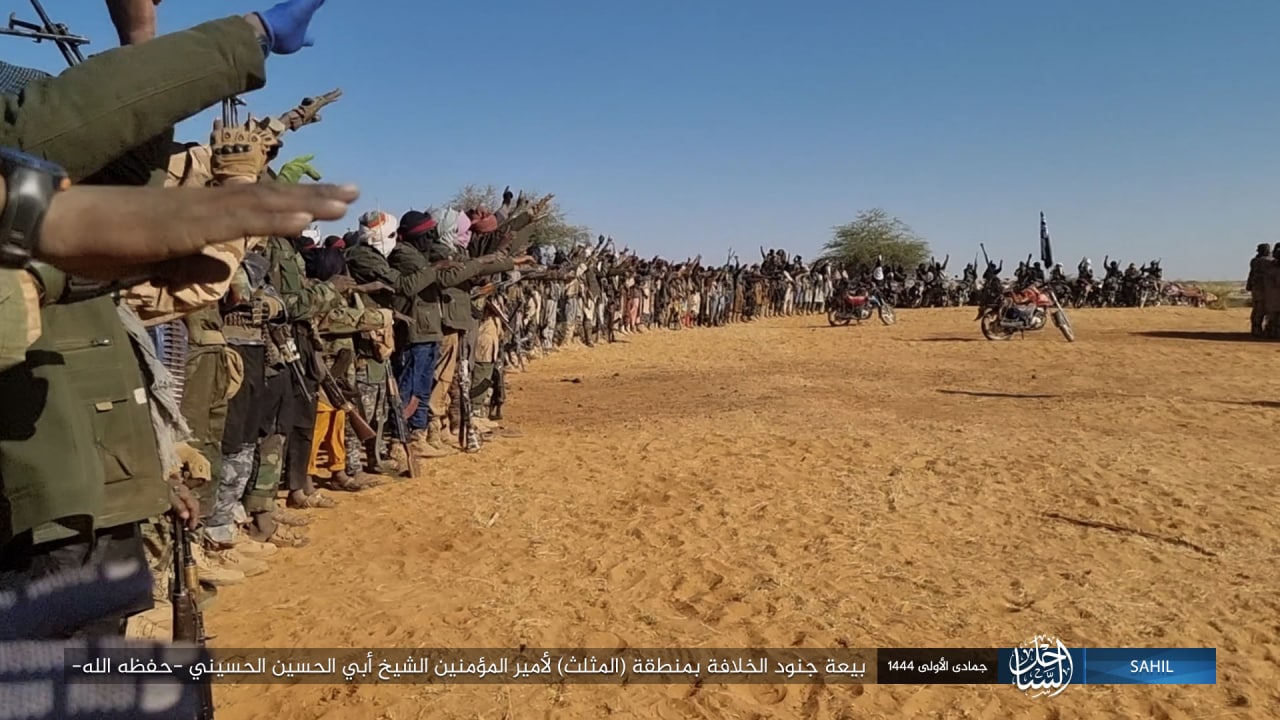




















December 4:
Wilāyat al-Ṣūmāl




















Wilāyat Wasaṭ Ifrīqīyah







Wilāyat al-Sāḥil – Anderamboukane Village









December 5:
Wilāyat Gharb Ifrīqīyah – Central Nigeria






Wilāyat al-Shām





















Wilāyat Bākistān















Wilāyat Mūzambīq






Wilāyat Wasaṭ Ifrīqīyah – Beni Region




December 7, 2022:
Tūnis


Wilāyat al-Hind – Kashmir








Wilāyat Mūzambīq – Nangade Region





December 8, 2022:
Lubnān






December 14, 2022:
Wilāyat Saynā’




December 17, 2022:
Wilāyat Sharq Asīā




December 19:
Wilāyat Lībīyā





_______________
Source: RocketChat
To inquire about a translation for this video message for a fee email: [email protected]
There are two main reasons for this: 1. pledges are leader-specific rather than group-specific and thus need to be renewed with each succession and 2. it is a way to legitimize al-Qurashi’s rule and create a media event so that the group can promote itself as it transitions to a new phase.
The first reason is also something that IS pointed to when it began to overtly feud with al-Qaeda (AQ) in 2013, by saying that following Abu Mus’ab al-Zarqawi’s death, his successor Abu Hamzah al-Muhajir gave baya to the newly created Islamic State of Iraq’s leader Abu ‘Umar al-Baghdadi and even after Abu ‘Umar was killed, when Abu Bakr al-Baghdadi took over in 2010 and then Usamah Bin Laden was killed in 2011, Abu Bakr never publicly gave baya to Ayman al-Zawahiri, even if al-Zawahiri claims he gave it to him privately. Therefore, from the perspective of IS this whole process is not trivial, but important for legitimacy of its leadership and to potentially weed out any insubordination before it manifests into something larger as it already did in the past vis-a-vis AQ.
This post will be updated with the latest official pledges.
—
March 11, 2022:
Wilāyat al-‘Irāq – Karkūk




























Wilāyat Gharb Ifrīqīyyah – Lake Chad Basin

























Wilāyat al-Shām







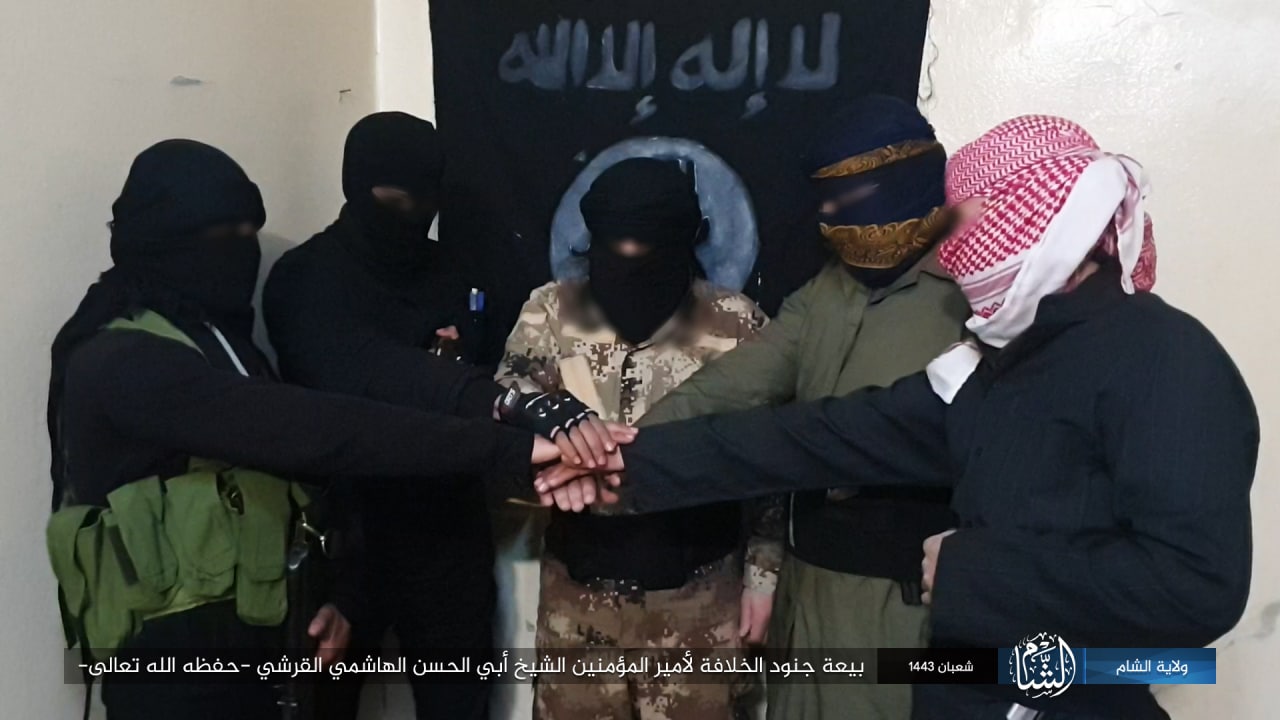


























Wilāyat al-Ṣūmāl








Wilāyat Sharq Asīā






March 12, 2022:
Wilāyat al-‘Irāq – al-Ānbār












Wilāyat al-Yaman




Wilāyat al-‘Irāq – Ṣalāḥ al-Dīn














Wilāyat Khurāsān






























Wilāyat Gharb Ifrīqīyyah – al-Faruq Region













Wilāyat Lībīyā



Wilāyat Gharb Ifrīqīyyah – Sambissa








Wilāyat Gharb Ifrīqīyyah – Sahel Region
























Wilāyat Gharb Ifrīqīyyah – Kerenoa Region





Wilāyat Bākistān









Wilāyat al-‘Irāq – Shamāl Baghdād


Wilāyat al-‘Irāq – al-Janūb


Wilāyat al-‘Irāq – Diyālā
















Wilāyat al-‘Irāq – Nīnawā


Wilāyat al-Hind








Wilāyat al-‘Irāq – Dijlah




Wilāyat Saynā’












Wilāyat Wasaṭ Ifrīqīyah













—
Below you will find details I have been tracking on extremism and militancy in Tanzania or related to Tanzanians involved in jihadism prior to yesterday’s first claim by IS of an attack in Tanzania. If anyone wants to add anything to the following dossier let me know and I will post it so there is a fuller picture. From oldest to most recent.
—
July 11, 2014:
Threat of Al-Shabaab and Extremist Attacks Grows in Tanzania
February 21, 2015:
Tanzania on security alert after police attacked
April 15, 2015:
Tanzanians lynch suspected Somali militant, police arrest 10 others
April 20, 2015:
Analysis: Tanzania’s Arrest of Militants Highlights an Ongoing Jihadist Threat
April 30, 2015:
Man arrested in Tanzania may be Islamist rebel leader
May 3, 2015:
5 injured in hand grenade blast in Tanzania’s Morogoro region
May 18, 2016:
Tanzanian militants send another message to their relatives | Ahl Kahf
May 9, 2017:
Tanzanian bank FBME shut down over US terror funding charges
May 15, 2017 :
SA passports to terror: Newly minted documents show courier’s links to ‘White Widow’, al-Shabab
March 19, 2018:
Two Mombasa men arrested headed to Somalia to join Al-Shabaab
May 24, 2018:
AU Confirms ISIS Infiltration In Countries
October 20, 2018:
Tanzania arrests 104 people for plotting ‘radical camps’ in Mozambique
October 25, 2018:
Tanzania Stops Suspected Militants Flocking to North Mozambique
December 27, 2018:
Autoridades moçambicanas detêm dois estrangeiros ligados aos ataques em Cabo Delgado
December 31, 2018:
South African, Tanzanians among suspected jihadist leaders in Mozambique
January 2, 2019:
SA man accused of terror-related activities in Mozambique to appear in court
January 14, 2019:
‘Foreign jihadists’ among dozens killed in southern Somalia
January 30, 2019:
3 Tanzanians jailed in Wajir over terror links
July 31, 2019:
The eastern DRC’s most active rebel group just got a bit more dangerous
November 13, 2019:
Tanzania says gunmen kill six in ambush near Mozambique border
November 19, 2019:
A Salafi-jihadi Insurgency Could Spread to Tanzania
January 28, 2020:
Magufuli’s Reign and Tanzania’s Creeping Radicalization Issue
August 11, 2020:
TPDF to launch a manhunt along the border with Mozambique
September 4, 2020:
Aboud Rogo’s followers unleash terror in Mozambique
October 2, 2020:
Infographic: The news of the harvest of soldiers in Central Africa during the year from the month of Safar 1441 AH until Safar 1442 AH

October 15, 2020:
The Soldiers of the Caliphate attacked Barracks of the Tanzanian Crusader Army in the Village of Kitiya in the Area of Mtwara yesterday, where clashes took place with various types of weapons, which led to the death and injury of a number of elements and a tank was burned, and the Mujahidin seized various weapons and ammunition

There are two main reasons for this: 1. pledges are leader-specific rather than group-specific and thus need to be renewed with each succession and 2. it is a way to legitimize al-Qurashi’s rule and create a media event so that the group can promote itself as it transitions to a new phase.
The first reason is also something that IS pointed to when it began to overtly feud with al-Qaeda (AQ) in 2013, by saying that following Abu Mus’ab al-Zarqawi’s death, his successor Abu Hamzah al-Muhajir gave baya to the newly created Islamic State of Iraq’s leader Abu ‘Umar al-Baghdadi and even after Abu ‘Umar was killed, when Abu Bakr al-Baghdadi took over in 2010 and then Usamah Bin Laden was killed in 2011, Abu Bakr never publicly gave baya to Ayman al-Zawahiri, even if al-Zawahiri claims he gave it to him privately. Therefore, from the perspective of IS this whole process is not trivial, but important for legitimacy of its leadership and to potentially weed out any insubordination before it manifests into something larger as it already did in the past vis-a-vis AQ.
This post will be updated with the latest official pledges.
November 2, 2019:
Wilāyat Saynā’



al-Binghāl




November 3, 2019:
Wilāyat al-Ṣūmāl



November 4, 2019:
Wilāyat Bākistān


Wilāyat al-Yaman – al-Bayḍā’









November 5, 2019:
Wilāyat al-Shām – Ḥawrān







Wilāyat Khurāsān

















November 6, 2019:
Tūnis




November 7, 2019:
Wilāyat Gharb Ifrīqīyyah – Nījīrīā











Wilāyat al-Shām – Ḥimṣ
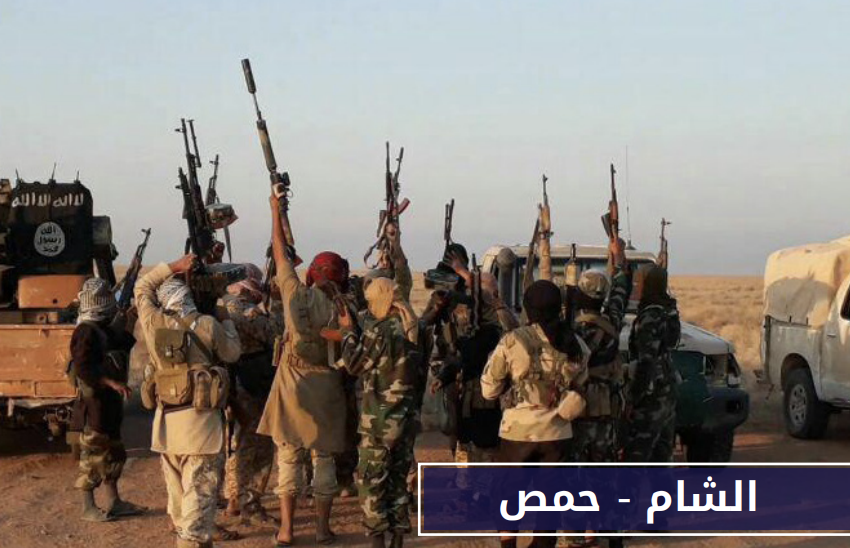
Wilāyat al-Shām – al-Khayr
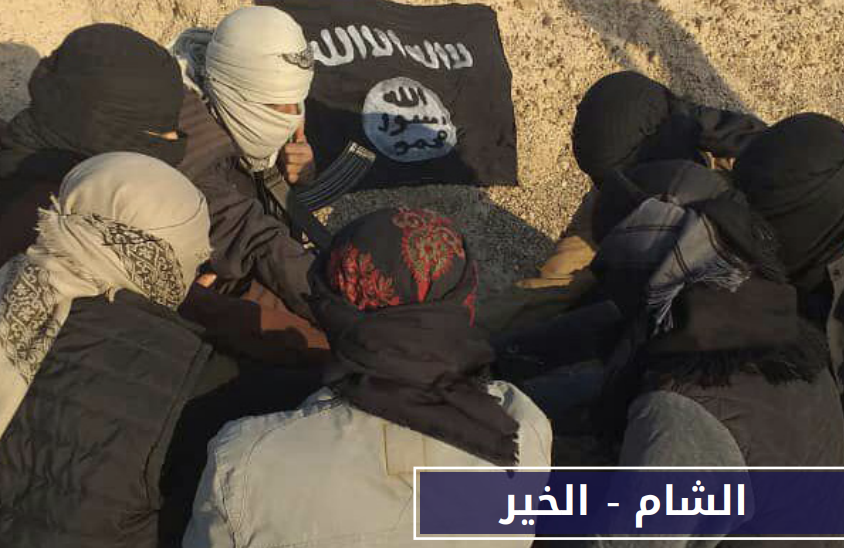
Wilāyat al-Shām – al-Raqqah
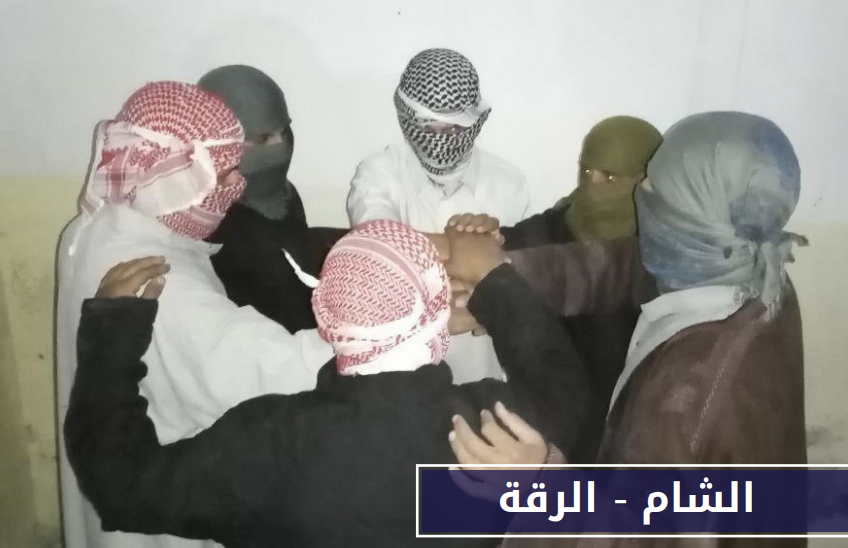
Wilāyat Sharq Asīā
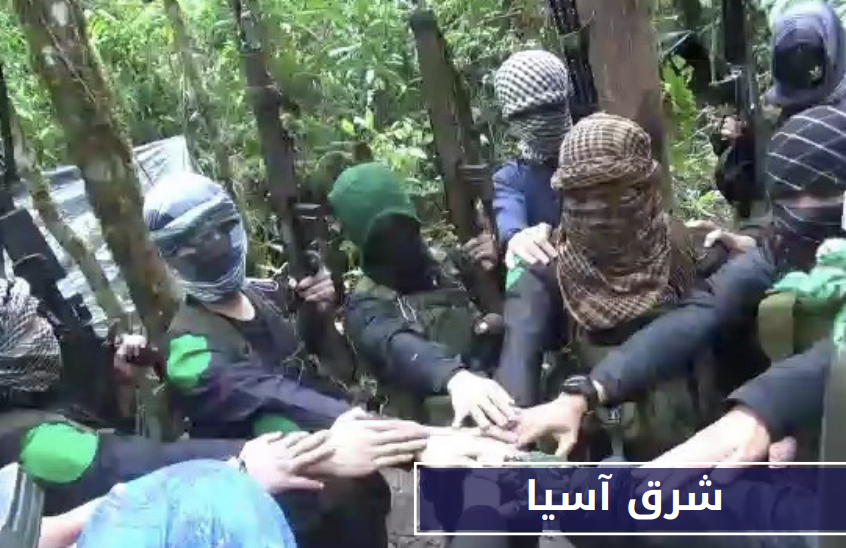
Wilāyat Wasaṭ Ifrīqīyyah
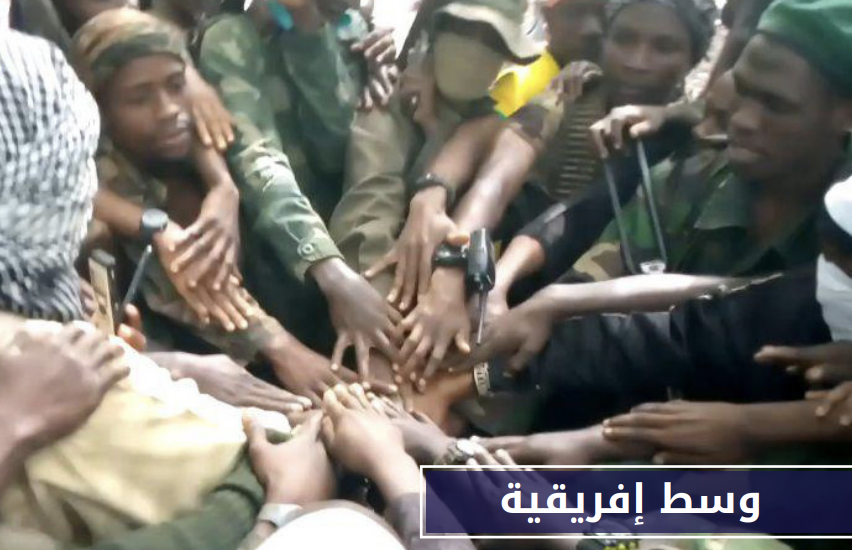
November 8:
Wilāyat al-Shām – Ḥimṣ




November 9:
Wilāyat Sharq Asīā







Wilāyat Gharb Ifrīqīyyah – Mālī and Būrkīnāfāsū








Wilāyat al-Shām – al-Barakah




November 12, 2019:
Wilāyat al-Shām – Ḥalab


November 14, 2019:
Wilāyat al-‘Irāq – Shamāl Baghdād



November 15, 2019:
Wilāyat Lībīyā







November 16, 2019:
Wilāyat al-‘Irāq – Dijlah



November 17, 2019:
Wilāyat al-‘Irāq – Diyālā








November 18, 2019:
Wilāyat al-‘Irāq – Ṣalāḥ al-Dīn



November 19, 2019:
Wilāyat al-‘Irāq – Karkūk




November 22, 2019:
Wilāyat Sharq Asīā – Indūnīsīyā


November 29, 2019:
Adhirbayjān

